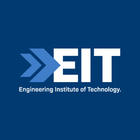Graduate Certificate in Safety, Risk and Reliability Engineering
Graduate Certificate in Safety, Risk and Reliability Engineering
Modern engineers face an intriguing set of challenges when tackling uncertainty, and they have developed some of the smartest methods, tools, techniques, and approaches for understanding system safety, risk, and reliability. The Graduate Certificate in Safety, Risk, and Reliability Engineering is the ideal gateway to boost your capacity to tackle…
Categories
COURSE DESCRIPTION
Modern engineers face an intriguing set of challenges when tackling uncertainty, and they have developed some of the smartest methods, tools, techniques, and approaches for understanding system safety, risk, and reliability. The Graduate Certificate in Safety, Risk, and Reliability Engineering is the ideal gateway to boost your capacity to tackle these real-world, increasingly complex issues. Upon completion of this program, you will gain skills and knowledge in the latest and developing technologies in safety, risk, and reliability.
Program Details
In the 21st century, industry will routinely deal with novel hazardous processing technologies, complex energy grid load-balancing from renewables, driverless cars, artificial vision to augment control, and feedback in sub-sea exploration – and the infinitesimal scale of nanotechnologies in bionic engineering. Currently, people are at the heart of many hazardous work environments, exposed to the consequences of uncontrolled events. Still, soon, artificial intelligence will afford more human tasks to be automated (and present a host of newer risks in exchange for the retired ones). This progress has to be examined in systematic terms – terms that integrate our understandings of technical fallibility, human error, and political decision-making.
Graduates of this program will be able to identify, critically analyse and creatively solve intellectually complex, specialised professional engineering problems relevant to engineering, underpinned by critical analysis, root cause analysis, and contributory factor analysis techniques, disaster identification, innovation, self-reflection, research, evaluation, synthesis, accountability, and sound engineering judgment of solutions relevant to the Professional engineering domain.
Graduates will also apply data analysis and statistics to interpret failure rates, appreciate their limitations, and apply them to relevant safety system models.
Program Structure
You must complete 12 credit points comprising four core units. There are no electives in this program. The program duration is six months across two terms, and you will study two units per term. For further study, graduates may consider EIT’s Master of Engineering (Safety, Risk & Reliability).
Potential Job Outcomes
Potential job roles include engineering and management positions in the following areas of expertise:
- Project Manager
- Principal Risk Analyst
- Work environment coordinator
- Safety and Reliability Engineer
- Head of Safety and Risk
- Senior Safety Engineer
REQUIREMENTS
Applicants are required to:
Hold a recognized bachelor degree (or above) in engineering or science in a congruent field of practice,
Have completed the equivalent of first-year Bachelor level mathematics, or are able to demonstrate recognized relevant work experience.
Have an appropriate level of English Language Proficiency at an English pass level in an Australian Senior Certificate of Education, or an IELTS score of 6.0 (with no individual band less than 6.0)
Applicants who hold a bachelor’s degree in a non-congruent engineering field are required to demonstrate their prior learning and experience is equivalent to the entry requirements (exact positions and roles that will be considered relevant are to be decided by each specialisation and will be considered on a case-by-case basis by the EIT Admissions Committee).
Applicants who do not hold a recognized bachelor’s degree are required to demonstrate their prior learning and experience is equivalent to this qualification. A minimum of an Australian Advanced Diploma (or equivalent) in Engineering and 10 years of technical work experience at a technologist level or above in a relevant engineering field is required for an application to be considered (exact positions and roles that will be considered relevant are to be decided by each specialization and will be considered on a case-by-case basis by the EIT Admissions Committee)
EDUCATIONAL INSTITUTION
The Engineering Institute of Technology (EIT) delivers industry driven programs to equip its students with the skills required in the real industrial world. Its study options are available across Perth and Melbourne; and include classroom sessions, practical lab exercises, assessments, class discussions and self-study. Additionally, students enjoy access to industry experts based around the globe through live and interactive online presentations. All EIT programs provide access to remote laboratories and cutting-edge simulation software. Hands-on laboratory practicals are an essential component of EIT’s programs to ensure students put theory into practice. These hands-on workshops cover the major discipline-specific applied skills required for competency in engineering practice.




